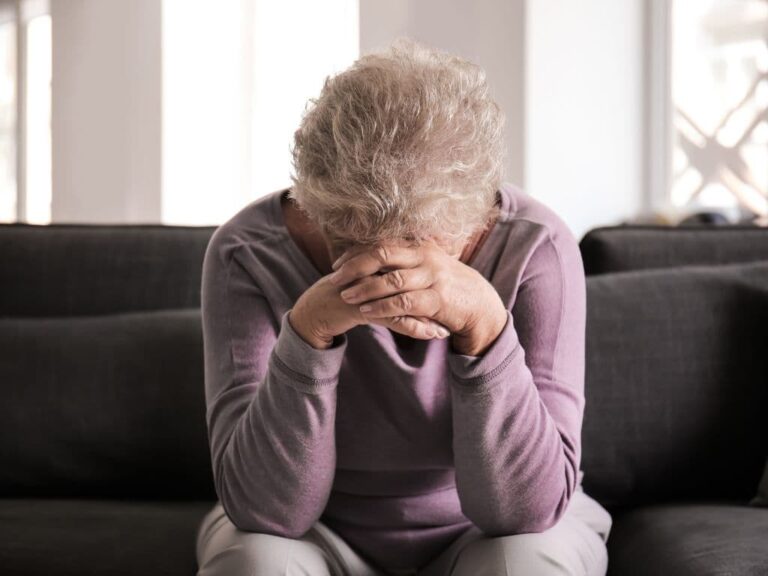How Often Should Nursing Home Residents Be Bathed?
Nursing home residents should ideally be bathed twice a week or more depending on their individual hygiene requirements. However, the frequency can vary based on factors such as the resident’s mental and physical health conditions, personal preferences, and their level of cooperation.
Residents who are able to maintain some aspects of their personal hygiene independently may require less frequent assisted bathing, while those with certain health conditions, such as incontinence or dementia, may require more frequent baths or showers.

How Important Is It for Nursing Home Residents to Be Bathed Regularly?
Regular bathing is essential for nursing home residents for various reasons including personal hygiene, skin health, infection control, and overall wellbeing. Depending on an individual’s health condition and personal preference, bathing may range from once to thrice a week.
Regular cleaning of the body prevents unpleasant odors and maintains a sense of cleanliness and dignity. It helps remove dead skin cells, sweat, and dirt that can lead to skin problems if not addressed.
Elderly skin tends to be thinner and more sensitive, requiring regular cleaning and moisturizing to maintain its health. Using milder bath products that promote moisture retention can keep the skin clean and prevent it from drying and cracking. Incorporating a good moisturizer after bathing can keep the skin supple and prevent it from drying out.
Regular bathing can help prevent infections, especially urinary tract infections in women, which can be caused by improper cleaning of the private areas. For residents with dementia or those who experience frequent toilet mishaps, more frequent bathing may be needed to prevent skin infections and lesions.
Bathing can also contribute to a resident’s overall sense of wellbeing. It can serve as a refreshing activity that can enhance mood, promote relaxation, and improve self-esteem.
However, there are instances when elderly residents may resist bathing due to factors like low income, boredom, living alone, busyness, tiredness, fear of accidents, loss of dignity and control, mobility issues, reduced strength and dexterity, mental health challenges, sight and hearing challenges, and a reduced sense of smell.
In such cases, it is important for caregiver staff to handle these situations with sensitivity and professionalism, ensuring that residents’ rights are respected while also maintaining their hygiene and health. Alternative methods, such as sponge baths or the use of gentle cleansing wipes, can be considered for residents who are unable or unwilling to take full baths or showers.
What Are the Benefits of Bathing Nursing Home Residents Regularly?
Regular bathing of nursing home residents provides several benefits, including:
- Helps maintain personal hygiene
- Prevents infections and skin conditions
- Contributes to overall physical health
- Reduces body odor
- Provides an opportunity for health checks
- Offers a sense of routine and normality
- Promotes self-esteem and dignity
- Encourages social interaction
- Provides a sense of comfort and relaxation
- Aids in the prevention of urinary tract infections
- Assists in maintaining skin moisture and health.
How Often Should Nursing Home Residents Be Bathed?
Nursing home residents should ideally be bathed at least once or twice a week to maintain hygiene and prevent skin conditions or infections. However, the frequency of bathing can depend on several factors including the resident’s physical and mental health, and their personal preference.
A full bath or shower may not always be necessary, as a sponge bath can also ensure cleanliness. In cases where the resident is not willing or able to take a bath, other methods such as wiping their faces, underarms, private parts, and feet with a wet cloth can be used.
Women should be particularly careful while cleaning the private areas, wiping from front to back during sponge baths to avoid urinary tract infections. If the weather is hot, residents may need to bathe more frequently.
Elderly skin is more sensitive due to reduced oil production, which makes it prone to tearing and bruising. Therefore, milder bath products that promote moisture retention should be used. Post-bathing, a good moisturizer can help keep the skin supple and prevent it from drying and cracking.
Exceptions to the once or twice a week bathing rule may apply for residents suffering from mental conditions such as dementia, who may need more frequent baths due to increased chances of toilet mishaps. In such cases, incontinence pads need to be changed frequently to prevent skin infections and lesions.
Body odor in elderly people can change due to the skin generating fewer antioxidants, leading to the creation of a compound called 2-nonenal. Soaps containing persimmon, which dissolve up to 97% of nonenal, can help address this issue.
Residents may refuse to bathe due to a variety of reasons including low income, boredom, isolation, fatigue, fear of catching a cold, fear of bathroom accidents, loss of dignity and control, mobility issues, reduced strength and dexterity, mental health challenges, sight and hearing challenges, and a reduced sense of smell.
In such cases, the nursing home staff should respect the resident’s rights, keep offering assistance, reassure them, and find ways to make bathing more acceptable and comfortable for them. However, if a resident consistently refuses to bathe, it can become a health concern that needs to be addressed.
What Are the Guidelines for Bathing Nursing Home Residents?
The guidelines for bathing nursing home residents typically suggest that seniors should bathe at least once or twice a week to maintain personal hygiene and prevent skin conditions or infections. However, bathing doesn’t always have to involve a full bath or shower. Sponge baths, where all areas are cleaned with soap and water, are also effective.
On days where a resident may not feel like bathing, they can be encouraged to wipe essential areas such as their face, underarms, private parts, and feet with a wet cloth. Women should be mindful to wipe from front to back during sponge baths to prevent urinary tract infections.
The frequency of bathing may be increased during hot weather, but caution should be taken as elderly skin is more sensitive due to reduced oil production, making it more prone to tearing and bruising. Milder bath products that promote moisture retention are recommended, along with a good moisturizer to keep the skin supple and prevent it from drying and cracking.
Exceptions to bathing once or twice a week may occur in cases where the elderly person has dementia and is prone to more toilet mishaps, necessitating more frequent baths to avoid infections. Incontinence pads or diapers should be changed frequently to prevent skin infections and lesions.
The guidelines also acknowledge that body odor changes with age due to the skin’s reduced antioxidant production leading to the creation of 2-nonenal, a compound associated with a greasy or grassy smell. Soaps containing persimmon, which dissolves 2-nonenal, can be useful.
However, there are various reasons why some seniors may resist bathing, such as low income, boredom, isolation, busyness, tiredness, fear of catching a cold, fear of bathroom accidents, loss of dignity and control, mobility issues, reduced strength and dexterity, mental health challenges, sight and hearing challenges, and reduced sense of smell.
How Can Caregivers Make Sure That Nursing Home Residents Are Getting Enough Baths?
Ensuring that nursing home residents are getting enough baths requires a comprehensive approach that considers the physical, mental, and emotional needs of the elderly.
Personal Preference and Health Condition: It’s important to understand that the frequency of baths may depend on the resident’s personal preference and health condition. Generally, a senior should bathe at least once or twice a week to avoid skin conditions or infections. However, some may require more frequent bathing due to health conditions such as incontinence or dementia.
Alternative Bathing Methods: On days when the resident doesn’t feel like taking a full bath or shower, caregivers can offer alternative methods such as sponge baths or using wet cloths to clean important areas like faces, underarms, private parts, and feet.
Education: Caregivers should educate residents about the importance of maintaining personal hygiene and how it can help them feel better and more like themselves. Demonstrating the appropriate techniques and ensuring they understand the process can help make baths less intimidating.
Safe and Comfortable Environment: The bathing area should be safe and comfortable for the elderly. This includes installing safety features like grab bars and non-slip mats, as well as ensuring the water temperature is appropriate. If a resident is afraid of falling, caregivers could consider portable shower stalls or seated showers.
Respect for Privacy and Dignity: It’s important to handle the bathing process with respect for the senior’s privacy and dignity. If the resident needs assistance, caregivers should offer help in a respectful and non-intrusive manner.
Use of Gentle Products: As older skin is more sensitive, caregivers should use milder bath products that promote moisture retention and are gentler on the skin. A good moisturizer can also help prevent the skin from drying and cracking after bathing.
Regular Check for Body Odor: Regular checks for body odor can provide clues about the resident’s bathing habits. If there’s an unusual odor, it may indicate that the resident is not bathing enough. However, it’s important to note that body odor can change with age due to chemical changes in the skin.
Addressing Barriers: Caregivers should identify and address any barriers that might be preventing the residents from bathing regularly. This could be physical challenges, mental health issues, or fears related to bathing.
What Challenges Do Caregivers Face When Trying to Bathe Nursing Home Residents Regularly?
Caregivers often face a multitude of challenges when trying to bathe nursing home residents regularly. These challenges are a combination of the resident’s physical and mental health conditions, the resident’s personal preferences, and the caregiver’s ability to manage these constraints effectively.
Physical Challenges: Aging brings about various physical ailments like arthritis, knee and hip issues, reduced strength and dexterity, and impaired mobility. These conditions make movement around the shower or bathtub painful and difficult for the residents. Moreover, the skin of the elderly is more sensitive, as it produces fewer oils and is prone to tearing and bruising. This makes bathing a delicate process that requires mild bath products and careful handling.
Mental Health Challenges: Mental health issues like depression and dementia can also affect bathing routines. Residents with depression may lose interest in personal hygiene, while those with dementia can forget when they last bathed. The residents may also fear losing their independence and dignity if they need assistance with bathing.
Fear of Accidents: The elderly are more unstable on their feet, leading to a fear of falling accidents during bathing. This fear can discourage residents from bathing regularly, despite safety adjustments in their bathrooms.
Facilitation Challenges: Some elderly residents may be living on a low income and can’t afford bath and grooming supplies. This financial constraint can affect their ability to maintain regular personal hygiene.
Personal Preferences: Some residents may have personal preferences that deter regular bathing. They may find bathing tiring, or they may be afraid of catching a cold from bathing. Others may not want to bathe out of boredom, or because they are busy with other chores.
Sensory Challenges: Aging can lead to a partial or full loss of eyesight and/or hearing abilities, making personal hygiene a lengthy and tiring process. Additionally, a reduced sense of smell can lead to infrequent bathing as the resident may not perceive any body odor.
Incontinence: Residents who are incontinent have more hygiene needs and require frequent bathing, changing of clothes, and diaper changes. Managing incontinence can be a challenge for caregivers.
Communication Challenges: Communicating with residents who have impaired speech or cognitive function can make it difficult for caregivers to express the importance of regular bathing and to negotiate bathing times.
Caregivers need to balance the physical and mental health needs of the residents, their personal preferences, and their own abilities to provide care. This requires patience, understanding, skill, and often, creativity in finding solutions that work for each individual resident.
Frequently Asked Questions
-
How often should nursing home residents be bathed?
1. Seniors do not have to shower every day. Although most Americans don’t shower every day, this is not an essential requirement to maintain good health. Seniors can avoid infection and skin damage by bathing at least once a week.
-
Why are private care homes so expensive?
Answer: It is simple. Care homes are expensive because they offer 24-hour care, including specialist or nursing care, for their residents.
-
Why is nursing home expensive?
Nursing home care can be expensive due to the cost of medication, staffing and other costs. To cover costs and make profits, nursing homes must charge higher rates.
-
Is long-term care insurance a waste of money?
If they have long-term insurance, it is a great option. The premiums paid are not worth anything if long-term care isn’t something you will use. There is nothing you will get in return. This plan may be considered a waste in such situations.
-
Where do seniors live in Manhattan?
Manhattan Community District 8, Upper East Side, and Brooklyn Community District 13, Brooklyn Beach & Coney Island are two areas where seniors make up 20 percent.
-
What happens to elderly who have no money?
An elderly person may be made a ward if they are unable to pay their bills or have no relatives. To help them make the best decisions regarding their lives, a guardian is appointed.
-
What is the difference between a care home and a nursing home?
A nursing home has always had a nurse to assist with medical needs. While both residential and nursing care homes offer 24-hour care, the difference between them is that nursing homes can provide more comprehensive care.
-
How much does a nursing home cost in Washington state?
Cost of Washington Nursing Homes: The daily average cost of Washington nursing homes is $266. This cost is much higher than the $228 daily national average.
-
What is the most expensive retirement community in Florida?
1. Pelican Bay. Pelican Bay offers over 6,000 residences, ranging in price from $300,000.00 to $500,000.
-
Why is nursing care so expensive?
There is more need for elderly Americans to live in nursing homes, which means more nursing home workers. The cost of care is increased and wages rise.
-
How do I apply for senior housing in Queens NY?
You can apply online through NYC Housing Connect if you are interested in an apartment and feel you may be eligible. A self-addressed stamped envelope can be sent to HANAC Corona senior residence, P.O. Box 249, 135 S. Box 248, 135 S.
-
Who owns Watermark at Brooklyn Heights?
Kayne Anderson and Watermark own and operate a group of 17 retirement communities that total more than 2300 residents of assisted living, memory care and skilled nursing. The partnership is valued at around $1.2 billion.
-
What is the biggest problem in nursing homes?
Problems with staffing. Patients in nursing homes feel that their needs aren’t being met, despite some of the facilities having severe staff shortages.
-
How much does assisted living cost in Los Angeles?
Los Angeles’s Cost of Assisted Living: Los Angeles, CA Assisted living costs average $5250 per month. This is several hundred more than the $4,500 national median, but it’s still equal to the state-average.
-
How much does the watermark at Brooklyn Heights cost?
Luxury comes with a steep price. The Watermark charges monthly fees starting at $8,295 per month for studio apartments and ending at $20,295 per year for two-bedrooms. This does not include the one-time membership fee of $20,000 to assist living or memory care, and $50,000 for independent living.






